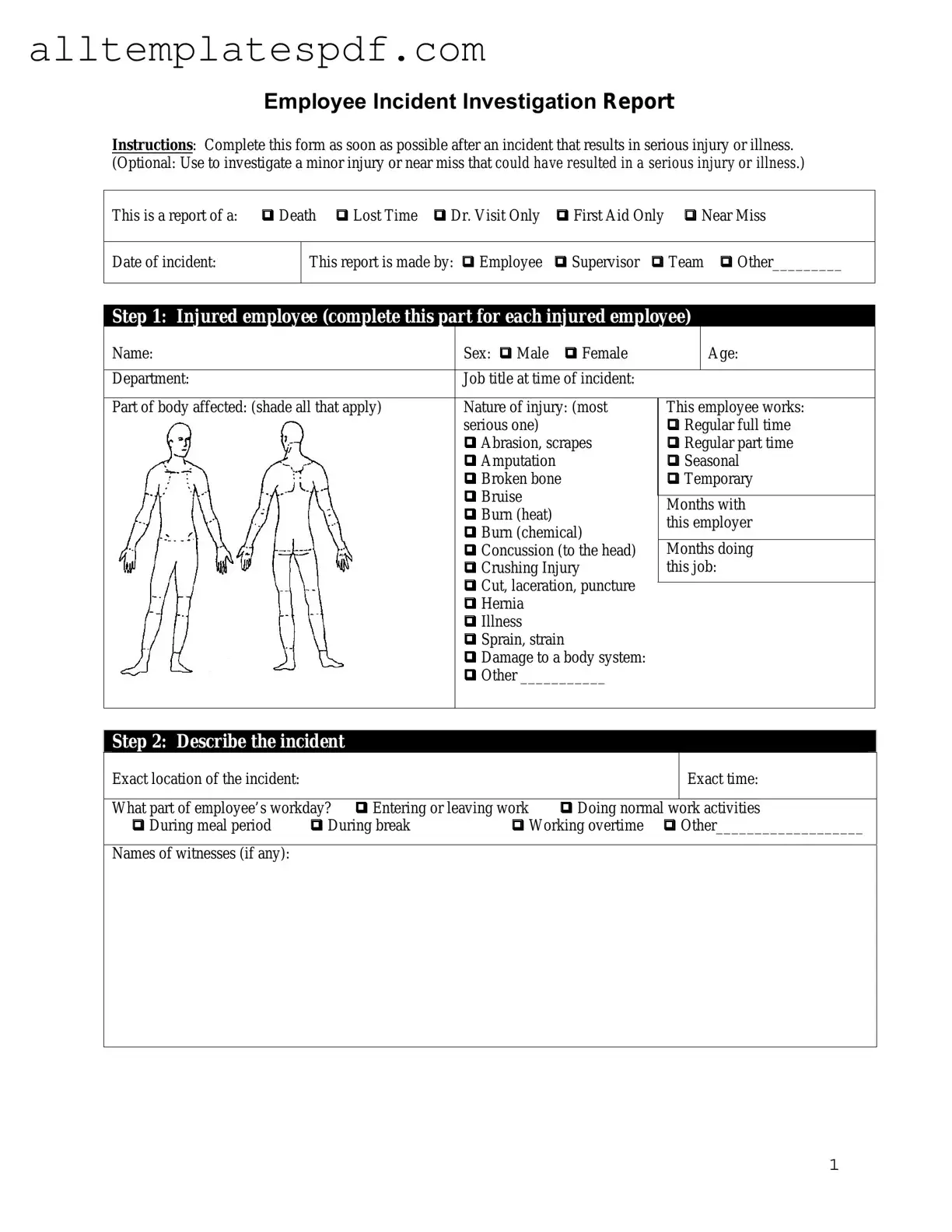Completing an Employee Accident Report form is a critical task that can significantly impact the outcome of an accident claim. However, many individuals make common mistakes that can lead to complications down the line. Understanding these pitfalls can help ensure that the report is filled out accurately and effectively.
One frequent mistake is failing to provide complete information about the incident. When filling out the form, it is essential to include all relevant details, such as the date, time, and location of the accident. Omitting this information can create confusion and hinder the investigation process.
Another common error is neglecting to describe the nature of the injury thoroughly. Individuals often write vague statements instead of specific descriptions. For instance, stating "I hurt my back" is less informative than detailing "I felt a sharp pain in my lower back after lifting a heavy box." Providing precise information helps ensure that the report accurately reflects the situation.
People also tend to forget to include witness information. Witnesses can provide valuable insights into the circumstances surrounding the accident. Not listing their names and contact information can lead to a lack of corroboration for the injured party's account, which may weaken the claim.
Additionally, some individuals make the mistake of not reporting the accident in a timely manner. Many organizations have specific deadlines for submitting accident reports. Delaying this process can raise questions about the validity of the claim and may even result in denial.
Another mistake is failing to sign and date the form. A signature serves as a confirmation that the information provided is accurate to the best of the individual's knowledge. Without a signature, the report may be considered incomplete or invalid.
Moreover, some people do not keep a copy of the completed report for their records. Retaining a copy is crucial, as it can serve as a reference point in case of disputes or further inquiries regarding the incident.
Inaccurate or unclear descriptions of the accident can also pose a significant issue. Using ambiguous language or technical jargon can lead to misunderstandings. Clarity is key; the report should be straightforward and easy to understand.
Another mistake involves not following the specific instructions provided by the employer. Each organization may have its own guidelines for completing the report. Ignoring these instructions can result in incomplete submissions or additional follow-up requests.
Finally, some individuals may feel pressured to downplay their injuries or the severity of the incident. It is essential to be honest and forthright about the situation. Underreporting can affect medical treatment and any potential claims, leading to longer-term consequences.
By being aware of these common mistakes, individuals can take steps to avoid them. Filling out the Employee Accident Report form accurately is vital for ensuring that the incident is documented properly and that any necessary support is provided.
